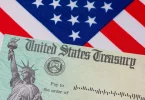Congratulations on your engagement to your American spouse! However, to legitimise your engagement, you need to travel to the United States to tie the knot. To do so, you’ll need the K-1 Fiancé Visa, which allows foreign-citizen fiancé(e) of a United States (U.S.) citizen to visit the United States for marriage.
To reconnect you with the love of your life, we will take you through the application procedures and highlight the requirements to get your K-1 Fiancé Visa.
What Is a K-1 Visa?
The fiancé(e) K-1 visa is a piece of documentation that allows for the foreign-citizen fiancé(e) of a United States (U.S.) citizen to visit the United States and marry his or her U.S. citizen sponsor within 90 days of arrival.
The foreign citizen will then apply for adjustment of status to a permanent resident with the U.S. Citizenship and Immigration Services (USCIS).
What Is a “Fiancé(e)”?
According to U.S. immigration law, a foreign-citizen fiancé(e) of a U.S. citizen is the recipient of an approved Petition for Alien Fiancé(e), Form I-129F, who has been issued a nonimmigrant K-1 visa for travel to the United States in order to marry his or her U.S. citizen fiancé(e).
Both the U.S. citizen and the K-1 visa applicant must have been legally free to marry at the time the petition was filed and must have remained so thereafter. The marriage must be legally possible according to the laws of the U.S. state in which the marriage will take place.
In general, the foreign-citizen fiancé(e) and U.S. citizen sponsor must have met in person within the past two years. USCIS may grant an exception to this requirement based on extreme hardship for the U.S. citizen sponsor to personally meet the foreign-citizen fiancé(e) or, for example, if it is contrary to the U.S. citizen sponsor’s or foreign-citizen fiancé(e)’s culture for a man and woman to meet before marriage.
How To Apply for a K-1 Fiancé Visa
To apply for a K-1 fiancé visa, follow the application process highlighted below. If you aren’t sure if you’re eligible or not, check out the eligibility requirements below.
Step 1: Confirm Your Eligibility
To receive a K-1 fiancé visa, all of the following must be true:
- Either you or your fiancé is a U.S. citizen.
- You and your fiancé plan to marry each other within 90 days after you arrive in the United States on your K-1 visa.
- You and your fiancé can legally marry in the United States, and any of your past marriages were legally ended by divorce, death, or annulment.
- You and your fiancé have met in person at least once in the two-year period before you file your application.
- If meeting in person would violate either your religious or cultural practices or if it would cause extreme hardship, you can request a waiver of this in-person meeting requirement.
- You can prove that your relationship is legitimate. You can demonstrate this with evidence from the beginning of your relationship to your engagement.
- Your U.S. citizen fiancé’s household income is at least 100% of the federal poverty guidelines. If their income is below this amount, they must submit a supplemental Form I-864 or Form I-864A with their application.
Step 2: File Form I-129F
The U.S. citizen fiancé needs to prepare and file the Form I-129F K-1 visa petition (Petition for Alien Fiancé) with U.S. Citizenship and Immigration Services (USCIS). The purpose of this form is to prove that your relationship is legitimate. Form I-129F must be filed by a U.S. citizen. A lawful permanent resident—also known as a green card holder—can’t request a K-1 visa for their fiancé.
What Documents Does USCIS Need for K-1 Fiancé Visa Processing?
When you file your Form I-129F petition with USCIS, you will need to include the following supporting documents with your forms:
- Proof that your fiancé is a U.S. citizen, such as: A copy of their U.S. passport, certificate of naturalization, or birth certificate
- A copy of your foreign passport.
- Proof that your relationship is legitimate or “bona fide,” including:
- Pictures of you and your fiancé together
- Flight records and/or hotel reservations of trips you took together or to visit each other
- Letters, emails, or texts that you sent to each other over the years
- Written statements from family, friends, or colleagues who know that you are engaged
- Proof that previous marriages have ended, if either of you were formerly married, such as: Divorce decrees, death certificates, annulments, etc.
- Proof that the two of you have met in person at least once within the past two years, this proof includes: Flight itineraries, hotel receipts, photos, letters/texts/emails, etc.
- Sworn statements (written by and signed by each partner) that describe your relationship. You must state that you intend to get married within 90 days of your arrival in the United States. It’s best to provide the original signed statements and keep copies for your records.
- A copy of any Form I-94 arrival-departure record that you received when visiting the United States.
- One passport-style photo of each partner.
- Form I-129F filing fee of $535. You can pay this fee by check, money order, or credit card. USCIS does not accept cash.
Once you mail your Form I-129F and supporting required documents to the appropriate address, USCIS will send you a receipt notice within about 30 days. This means USCIS will begin processing your case within 30 days.
Form I-129F Processing Time
It can take USCIS anywhere from 4–15 months to process your I-129F petition, depending on the USCIS service center location. The amount of time it will take to process your foreign fiancé petition depends on which service center you send your forms to.
Once USCIS approves your Form I-129F petition, it will send an approval notice to the mailing address(es) you provided on your form.
Step 3: File Form DS-160
Once USCIS approves your Form I-129F petition, USCIS will transfer your case to the U.S. Department of State’s National Visa Center (NVC). You will receive a notice from the NVC through the U.S. embassy in your home country about 30 days after USCIS approves your Form I-129F.
This notice will provide the date and location of your required visa interview. It will also include a list of additional supporting documents and instructions on how to provide these documents to your local U.S. embassy. Make sure that the contact information you provide on your Form I-129F is correct or you may not receive this notice.
Once you receive the notice from the NVC, you need to complete the State Department’s online DS-160 form: Online Nonimmigrant Visa Application. This is the actual K-1 visa application. After you complete this form, you need to print the confirmation page. This is very important because you will need to send the confirmation page to the embassy and bring it to your visa interview.
Supporting Documents
The U.S. embassy processing your case will request documents from both you and your U.S. citizen fiancé. Every embassy has a specific process for providing these documents, so be sure to follow the instructions that your embassy provides in its notice.
Documents from the U.S. citizen fiancé:
- An Affidavit of Support (Form I-134). The Affidavit of Support is a binding legal document in which U.S. citizen promises to use their resources to help keep their foreign fiancé from relying on government benefits in the future.
- Recent tax returns. You are only required to provide the most recent return, but it is a good idea to provide returns for the past three years.
- Proof of your relationship with your foreign fiancé. For this, you can provide a copy of the approved I-129F package originally filed with USCIS.
Documents from the foreign fiancé:
- Two passport-style photos.
- Your birth certificate.
- A copy of your valid, unexpired passport.
- Police clearances from all countries where you have lived for more than six months since you were 16 years old.
- A sealed medical exam form. You get this form at an immigration medical exam from an approved doctor.
Form DS-160 Processing Time
Once you file your DS-160 form with NVC in the Consular Electronic Application Center (CEAC), it will take 2–3 months for NVC to create and process your DS-160 form.
Step 4: Attend Your Visa Interview and Pay the Visa Fee
Your visa interview will take place at the U.S. embassy or consulate listed on the notice you received from the National Visa Center. This will probably be the embassy or consulate in the foreign fiancé’s home country and will take place 4–6 weeks after you receive the notice.
Only the foreign fiancé needs to attend the visa interview. The interview is usually pretty straightforward.
There is a $265 fee for a K-1 fiancé visa. You will usually pay this fee at the visa interview. But every embassy or consulate has its own requirements. Be sure to follow the instructions in the notice you receive from the embassy or consulate that is handling your case.
The consular officer who conducts your visa interview will usually make a decision on the same day as the interview. If they need additional information or evidence, they will ask you to submit it to the U.S. consulate or embassy after the interview.
Step 5: Come to the United States and get married!
Once your K-1 visa application has been approved, you will receive a sealed visa packet. Do not open this packet! The U.S. Customs and Border Protection agent who inspects you at the border will ask you for it. And they may not allow you to enter the United States if the packet is already open.
You must enter the United States within four months of the date that your K-1 visa is approved. Then, within 90 days of entering the United States, you must get married to your U.S. citizen fiancé. If you don’t, you will lose your K-1 status. If you decide not to get married, you must return to your home country as soon as possible.
You can’t change your status from a K-1 visa to any status other than a marriage green card. You also can’t use your K-1 visa to marry anyone other than the U.S. citizen with whom you filed Form I-129F.
Apply for a Marriage Green Card
After you get married, your foreign spouse can apply for a marriage green card by filing Form I-485: Application to Register Permanent Residence or Adjust Status and the required supporting forms and documents.
It’s good to note that the process of applying for a K-1 nonimmigrant visa to then apply for a marriage green card (adjustment of status) is faster than applying for a marriage green card abroad through consular processing.




